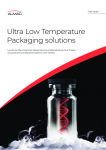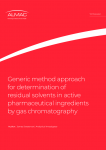Secure pharma supply chain requires connections, information

Pharmaceutical supply chain vulnerabilities are a growing concern—so much so that leaders like US Senators Elizabeth Warren and Marco Rubio have proposed legislation designed to shore up the issue, and President Joe Biden has made solving the issue a priority.
With the launch of the Cortellis Supply Chain Network (which connects ingredient and excipient manufacturers, pharma firms, and other players), Clarivate has launched a solution designed to connect buyers and sellers with valuable data and ultimately make therapies more readily available and accessible. Gareth Moore, product manager for Clarivate, spoke with Outsourcing-Pharma about current supply chain problems, and how the new technology might help.
OSP: Please share some of the key challenges we’re seeing in the pharma supply chain, particularly around excipients and APIs.
GM: Supply chain resilience and drug shortages are not new topics in the pharmaceutical industry. Countries worldwide have long had crisis aversion plans in place to ensure their populations can reliably and consistently access treatments, including in emergency situations such as natural disasters, geopolitical disruptions, or a global health crisis. An emergency situation can surface vulnerabilities in the supply chain that threaten the ability to provide drugs to those who need them.
On the demand side, an increased need for certain drugs, such as anesthetics or antibiotics, can stretch manufacturing capabilities. On the supply side, drugs simply cannot be manufactured or transported if there are system-wide shutdowns, a workforce is unable or reluctant to return to work, or a transportation network is interrupted.
Although drug shortages are a persistent problem, recovery can be particularly challenging after a crisis, especially for drugs that already have few suppliers or when manufacturing is concentrated in one geographic area.
The recent supply chain shortages highlighted dependencies on the sourcing of raw materials and APIs from only a few countries (e.g., India, Mainland China). As a result, many countries are encouraging and incentivizing onshore manufacturing. In a survey conducted by Global Pharma Insights, 67% of respondents stated that their governments were attempting to bring manufacturing home, and 84% responded that their companies were actively seeking new supply chain partners. In addition, for greater oversight, governments are continuing to enforce reporting systems of potential impacts on drug supply.
However, it is not possible to produce 100% of the supply domestically, and drug shortages are not solely due to a dependence on supply from other countries. Therefore, it is important to diversify supply chains, ensuring there are alternative suppliers in the event of an emergency situation in a specific geographic region.
OSP: What are some of the problems we can expect to see pop up or increase if these obstacles and vulnerabilities aren’t dealt with?
GM: Supply chains with a single point of failure or limited suppliers are particularly vulnerable to disruption. Therefore, having multiple and backup supply sources across geographies can diversify supply chains and help minimize interruptions during an emergency. A robust contingency plan includes early identification and negotiations with alternative suppliers, avoiding the need to reactively locate supply.
OSP: Please tell us about the Cortellis Supply Chain Network, how it works, and how it might help pharmaceutical professionals avoid or overcome issues in the excipient supply chain.
GM: The Cortellis Supply Chain Network from Clarivate is a digital partnering solution that supports generics companies, active pharmaceutical ingredients (API) manufacturers, fine chemical manufacturers, excipient manufacturers, raw materials suppliers, and biopharma in their pursuit to maintain a steady supply chain.
Cortellis Supply Chain Network provides buyers (procurement and sourcing professionals) and sellers (sales and business development professionals) with a secure marketplace that allows them to identify and connect with potential partners, and efficiently manage all steps, from quotation to finalizing the deal. With an increased demand for more accessible therapies, the platform will enable industry players to build robust supply chains and identify alternate sources during unprecedented times.
Users can access manufacturer and product information that is verified by the Cortellis research team to support the evaluation process. Manufacturers can supplement verified data with additional company and product information such as upstream supply, including insights on excipients, intermediates, reagents, and more.
The Cortellis Supply Chain Network enables sourcing and procurement teams to accelerate the pace at which they source ingredients, products, and services such as contract manufacturing or licensing opportunities. The platform provides suppliers with better visibility to a global digital audience and supports their efforts in establishing new customers.
OSP: Does use of the technology require any specialized equipment or training?
GM: Cortellis Supply Chain Network is user-friendly, with no specialized equipment or training required. Users can register and gain instant access to the platform with upgrade options available for enhanced insights and functionality. Industry members can register at https://access.cortellis.com/register?app=scn

















